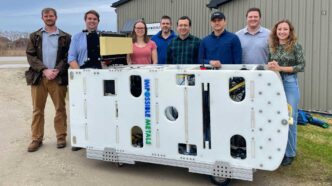The U.S. government is moving toward authorizing deep-sea mining in its Pacific waters, following a formal request from startup Impossible Metals. If approved, this would be a landmark step in unlocking America’s undersea mineral wealth.
On Tuesday, the Department of the Interior began the legal process to assess a potential lease sale in waters near American Samoa. The move responds directly to Impossible Metals’ April application. It kicks off with a federal register notice and a call for public input, but early signs point to a likely green light.
Interior Secretary Doug Burgum hinted at the administration’s direction, saying critical minerals are key to boosting national resilience. He added that responsible access to seabed resources would support both U.S. economic growth and national security.
A Startup’s Tech Disrupts the Deep-Sea Mining Debate
Impossible Metals, previously known as Impossible Mining, believes its technology offers a cleaner way to gather minerals from the ocean floor. The company uses an autonomous underwater vehicle (UAV) equipped with robotic claws to collect polymetallic nodules. These rock-like lumps are rich in high-demand minerals like nickel, cobalt, copper, manganese, and iron.
Unlike traditional mining methods that vacuum up the seabed, Impossible Metals says its claw-based approach reduces damage to deep-sea ecosystems. Its vehicle is designed to carefully pick up nodules without disturbing marine life or stirring up harmful sediment plumes.
As global demand for critical minerals surges—driven by electric vehicles, battery production, and renewable energy infrastructure—governments and corporations are searching for new sources. China currently dominates key markets like cobalt, prompting U.S. efforts to diversify supply.
Polymetallic nodules are especially attractive because they contain far higher mineral concentrations than most land-based mines. That makes them a potential jackpot for companies looking to secure future-ready supply chains.
Environmental Risks Stir Scientific Alarm
Still, not everyone is on board with deep-sea mining. Ecologists warn that disturbing the seabed could have long-lasting, possibly irreversible effects. Life in these remote ocean zones develops slowly. One study found it could take up to 50 years for microbial communities to recover after mining.
Marine animals, like sponges and corals that grow directly on the nodules, may be destroyed in the process. Even untouched areas face risks from plumes of sediment stirred up during collection, which can smother filter feeders and cloud the normally clear waters.
There’s also a scientific angle. Some researchers believe the nodules might play a role in generating oxygen, offering clues about how life could form on other planets. If mining destroys these formations, it could erase insights we haven’t even discovered yet.
As the U.S. edges closer to approving its first deep-sea mining leases, the decision could reshape global mineral strategy—or trigger a wave of environmental backlash. All eyes are now on how the Interior Department balances innovation with preservation in one of Earth’s most fragile frontiers.













